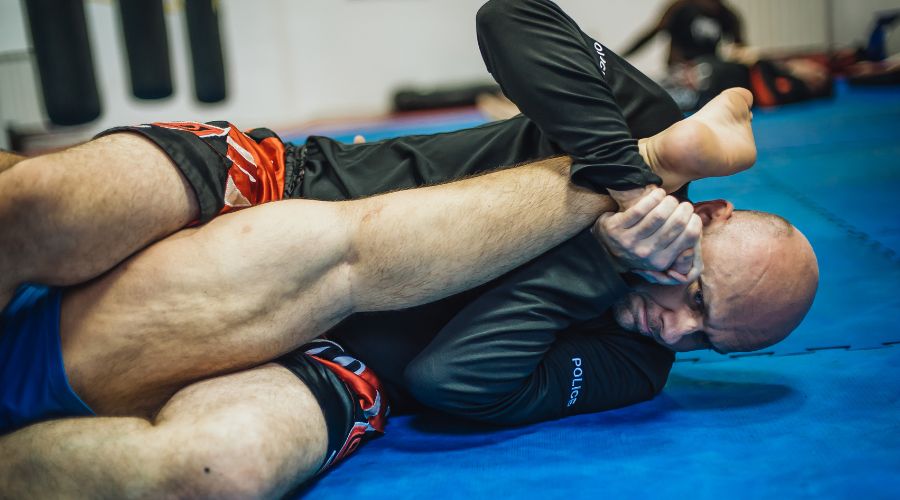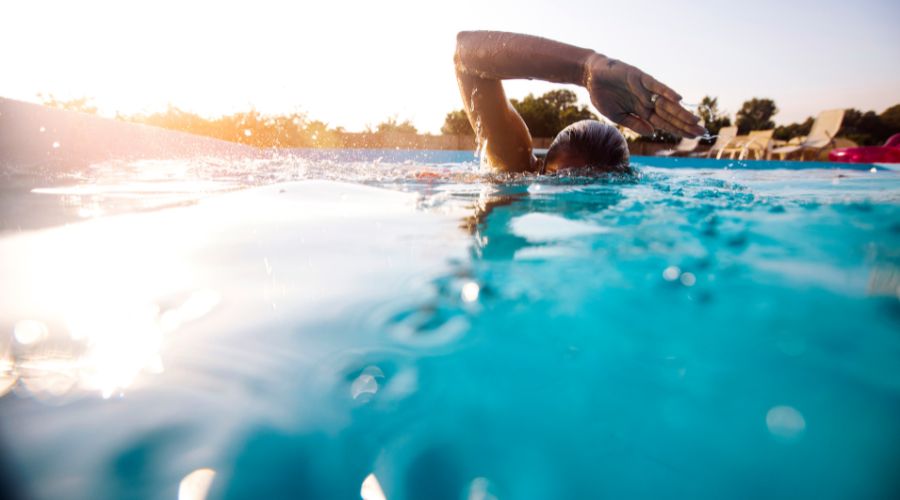Aging is a complex biological process, and it comes with certain limitations. You may wonder, can you start training BJJ at 50 years of age? Is it safe?
BJJ is an adaptable martial art that allows you to approach it at your own pace and level of intensity, which is crucial for 50-year-olds. To avoid injuries, start slowly and adopt the knowledge according to your physical abilities without pushing yourself over the limits. With this methodical approach, you can stay injury free, learn BJJ, and above all, have a lot of fun in training.
Let us introduce you to some of the best tips on starting BJJ at 50 and why age is just the number for this Brazilian martial art.
8 Tips When Starting BJJ At 50
Find A Good Instructor And A Reputable Academy
As a 50-year-old interested in learning jiu-jitsu, the first and most important task will be to find a reputable academy with a high-quality coaching staff. The last thing you need is to train in a bad dojo. Apart from poor technique, you may also develop bad habits and get hurt.
In the best case, the gym will include reputable coaches with experience working with people your age. They understand the needs of the 50-year-old, your abilities and limitations, and what teaching methods suit your age group the best. If the facility is big and highly populated, there might be more 40–50-year-olds training. This enables you to fit in easily, feel comfortable, and have someone from your age group to roll with.
Start Slowly And Be Patient

At 50 years of age, your body can’t take as much punishment as it could when you were younger. So avoid throwing yourself right into the fire by attending classes 6 times a week or twice a day.
BJJ beginnings are hard on your body. And during the first few months, your entire body will undergo many changes. Instead of rushing things, start slowly, give your body time to adapt, and be patient.
On average, it takes between 10 and 15 years to learn BJJ. At 50, you can’t speed up the process by any means, so be sure to start slowly and learn at a steady pace. In combination with stretching and strength workouts at home, hitting the gym twice a week would be perfect.
During the opening months, you will suffer and survive on the mats. Your body will feel sore every day, and you will get submitted hundreds of times. This is normal and part of the learning process. But it all becomes easier as you get more flexible and stronger and improve your technique.
Focus On Technique Rather Than Power
BJJ is also known as the “gentle” art where you must heavily rely on technique and think three steps in advance. Older students, in general, should always prioritize working on their technique. This does not require much energy nor puts stress on your body.
A high level of technical proficiency enables you to compensate for the lack of power and sheer strength with technique during the exchanges. At 50 or 60 years of age, you can easily overwhelm younger students with proper technique. Or in other words, you can’t beat their youth with strength, but you can with your mind.
Whatever you do on the mats, avoid using extensive force, notably in sparring, where most injuries happen. Exploding from the bottom or trying to muscle your way out by putting your body in awkward positions is how older people get hurt.
Pulling these moves puts a lot of stress on your back, neck, and joints and is not worth the price. Instead, rely on technique to get out of the bad spot, and if you cannot, tap out, reset the exchange, and try again.
Do Strength Workouts
Strength plays a significant role in BJJ, both in terms of performance and longevity. Most 50-year-olds already have trouble with sore knees and ligaments.
This is especially if they had been inactive for a long time before enrolling in classes. Thus, you can’t just enter the gym and start doing heavy squats, deadlifts, and other exercises. No, you have to be smart and adjust training to your age.
Start by doing bodyweight workouts. This includes exercises such as pull-ups, push-ups, squats (without weights), sit-ups, different planks, etc. As the months pass and you get stronger, you might add light weights to increase the resistance.
Focus on not lifting too heavy or doing too many reps, which may lead to delayed onset muscle soreness (DOMS). Isometric and plyometric strength workouts are also beneficial. According to a study, strength workouts reduce the risk of injuries by 66%.
Pick The Right Training Partners (Close To Your Age)
In an ideal scenario, you will roll and do sparring sessions with people similar to your age group and size. This is crucial because people from your age group roll at a similar pace and intensity and have high awareness. Like you, they are extra careful not to hurt themselves or their opponent by pulling too hard on the joints.
Practitioners in their 40s and 30s are also fine to roll with if they are not too aggressive. Do not try to follow their pace if you roll with much younger people. Prioritize safety and your limitations. If they overwhelm you with speed and strength and quickly catch into submission, tap out early and accept that the world belongs to the young ones.
If you stick with BJJ long enough, you will roll with many different people. And over time, find the ones who suit your age and abilities the best.
Stay Active Outside The Gym

Starting BJJ at 50 will put your entire organism in shock. So you need to focus on starting slowly and attending the classes no more than 2–3 times per week. However, you can use the rest of the days to do workouts to improve your conditioning and performance.
Older people are prone to joint injuries, so focus on low-impact workouts such as swimming or cycling. Swimming improves the strength of each muscle group, notably the core, legs, and shoulders. And above all, it doesn’t put much pressure on the joints.
The same stands for cycling and hiking. Both of these workouts improve cardiovascular capacity and are great for strengthening your knees and legs.
Emphasize Mobility
Most 50-year-olds have problems with tight muscles, stiff joints, and poor mobility. If you want to succeed in BJJ, you have to focus on improving flexibility and mobility. You can’t expect to execute most techniques, perform well, or avoid injuries without a high range of motion and strong balance.
Working on mobility is crucial in reducing the risk of injuries as it improves the health of muscles and joints. Older students should develop range of motion with full-range strength training. You can accompany this with various yoga and mobility routines, notably during the recovery days.
Plan Your Recovery Days Well
BJJ is addictive, especially among enthusiastic beginners. But at 50 years of age, your body is not healing as efficiently as when you were younger, nor does it have the same ability to recover from injuries. Thus, take a lot of rest, and avoid piecing two training sessions in a row to avoid overtraining.
Muscle overuse is common among 50 years olds who don’t prioritize longevity. You might feel motivated, enthusiastic, and energized. Piecing three training sessions might look like a piece of cake. But you can’t beat aging, and your body will eventually fail you. And when it does, you will have difficulty recovering from injuries and probably have to give up BJJ.
During the recovery days, avoid sitting on the couch all day despite your body feeling sore. Instead, go for a long walk or a light cycling session. The key is to increase the blood flow through the muscles to keep them warm and help them recover faster.
Final Thoughts — Train for longevity
As a 50-year-old, you have to approach BJJ according to your abilities and be aware of the limitations that come with aging. Your training should emphasize learning techniques at your own pace, staying healthy, having fun, and letting BJJ change your life for the better.
Start slowly and avoid overtraining. Be patient and focused on reaching a high level of technical proficiency while doing bodyweight workouts to improve strength. Adopt a strict stretching routine, plan recovery days well, and enjoy the entire process.
At 50 years of age, you don’t have to prove anything to anybody in the gym. Just showing an interest and committing to classes is already considered a success.
